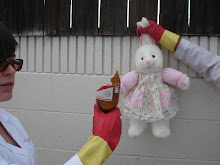So I’m gonna personalize the lesson for today and delve into what I’ve been working on so diligently. Let’s start with my research area: the lovely Cascadia Basin.
 Cascadia Basin is an underwater feature nestled in the North Pacific off the coast of Washington, Oregon and Canada. It’s pretty deep (~ 3000m) for not being so far offshore and it gets deeper as you move from the north to the south. As you can see from the map above, it’s cut by Cascadia Seachannel which runs north/south. You can think of seachannels as basically underwater canyons. HUMONGOUS canyons that make the Grand Canyon look like a baby.
Cascadia Basin is an underwater feature nestled in the North Pacific off the coast of Washington, Oregon and Canada. It’s pretty deep (~ 3000m) for not being so far offshore and it gets deeper as you move from the north to the south. As you can see from the map above, it’s cut by Cascadia Seachannel which runs north/south. You can think of seachannels as basically underwater canyons. HUMONGOUS canyons that make the Grand Canyon look like a baby.If you’ve been with me from the beginning, which I think is only one person, you’ve read “Science Lesson #1: Oceanograph-me”. I told you a little bit about what I’m doing in this part of the ocean, but let me back up and explain things more thoroughly.
There is a shitload of the nutrient silica in this part of the world. Silica is what little phytoplankton called Diatoms use to make protective coatings called frustules. We like diatoms because they’re plants that can photosynthesize and wisk away some of the CO2 we are pumping into the atmosphere as we burn fossil fuel. Good guys. People like my advisor (and therefore me) want to know why there is all this silica in the North Pacific. Does it have to do with having a ton of diatoms, or is it because of something else?
There are two ways to get this much silica into the waters of the North Pacific. One way is to pump it through the oceanic crust via hydrothermal vents. You’ve all seen these things. They look like this:
 Another way to get all this silica is by the dissolution of those diatom frustules as they fall through the water column. This is a two part process because not only does the silica dissolve as it makes it’s way to the seafloor, but whatever solid chunks make it to the seafloor continue to dissolve as they’re sitting around. Lots of biology = lots of silica.
Another way to get all this silica is by the dissolution of those diatom frustules as they fall through the water column. This is a two part process because not only does the silica dissolve as it makes it’s way to the seafloor, but whatever solid chunks make it to the seafloor continue to dissolve as they’re sitting around. Lots of biology = lots of silica.How do we tell where our silica has come from? We look at another element called germanium. Hydrothermal vents pump out all sorts of chemicals, one of which is germanic acid (GeOH4). If you’ve got water that has been thru a hydrothermal vent, you’ve got yourself a ton of germanium. On the other hand, when diatoms make their little frustules, a little bit of germanium sneaks in there with the silica. Not much, but just a little.
What I do is jump on a big boat and collect water from all different depths within the basin. I take this water and analyze it for silica and germanium concentrations and then plot it up on a graph like this.
 Looking at the picture, if we’ve got water with silica that is hydrothermally derived, the majority of our data points will cluster on a really steep line. If we’ve got water with silica that is from dissolution of diatoms, our points live on a much shallower line.
Looking at the picture, if we’ve got water with silica that is hydrothermally derived, the majority of our data points will cluster on a really steep line. If we’ve got water with silica that is from dissolution of diatoms, our points live on a much shallower line.Sounds easy right? Oh, but that’s where you’re wrong! There’s so much nit-picking and number crunching and migraine inducing data reduction that goes on when you want to make a graph like this. Always remember that the first 4 letters of analytical chemist are ANAL. And I am tits deep in it, folks. Back to work!
*TM: Le Bomb

















